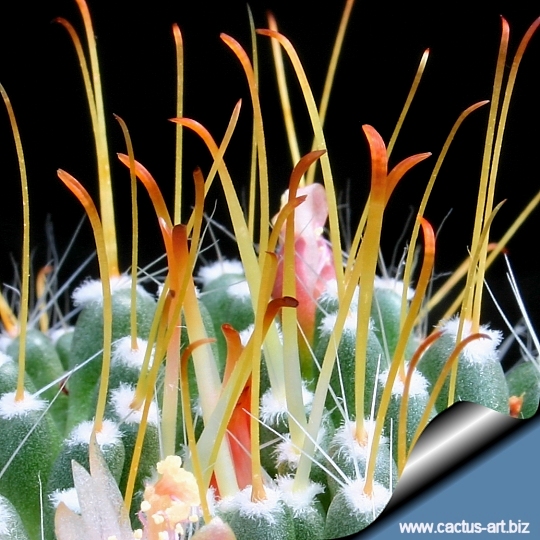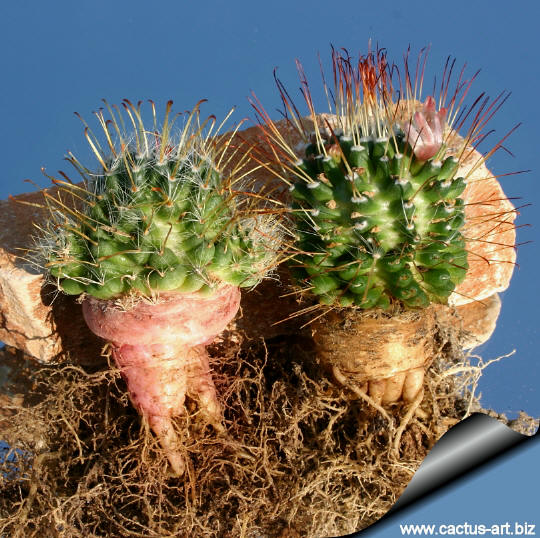|

Central spines bright orange and yellow, flexible with a bent tip,
but not
hooked. They are also flat a very uncommon feature for a
Mammillaria.
Radials
bristly and white.

Toumeya x knippelianus hybr. (left) &
Dolichotele x Un Pico hybr.
(Right)
This two similar cultivars are often confused but they are not the
same.
Cultivation: It is a species
of easy culture, recommended for any collection that needs
lots of light with ample airflow. Water regularly in summer, but do
not overwater (very
wet-sensitively, especially in light of its small root system)
Water thoroughly only if soil is dry to
the touch, let soil dry in between to prevent root rot,
keep dry in
winter.
Use a very porous
mineral-based potting mix, with excellent drainage, as can be
achieved by the addition of extra perlite or pumice. Feed with a high
potassium fertilizer in summer. Care must be taken with watering as they
tends to become swollen and untidy in growth habit if given too much
water and shade.
Sun Exposure: High levels of light are needed to
flower and for good spine development.
Can be sunburned if moved
from shade/greenhouse into full sun too quickly. During the spring it
may be able to take full sun until the heat arrives at the end of
spring. In an area that has hot afternoon sun, it may be able to take
full morning sun, but requires afternoon shade or afternoon light shade.
If grown correctly, it will reward the grower with generous
displays of flowers.
It is quite frost resistant if
kept dry, hardy as low as -5° C (or less) A resting period in winter and strong light are necessary so that it can
flower properly.
Clustering in cultivation and easily flowered.
For best results, use a shallow pot, and only use the smallest
diameter pot that will accommodate the plant. Sensitive to red
spider mite. Overhead watering is helpful in controlling mites.
Propagation: Through
cuttings or grafting.


 |